Table of contents
Soy sauce (Tamari) consists mainly of cooked (never raw ! Organic?) fermented soybeans - it contains little to no wheat. Traditional soy sauce made from organically produced ingredients is kind to health and nature.
Use in the kitchen
To create recipes, it is helpful to know about the ingredients. Therefore, we first want to answer two key questions:
What is Tamari? What is the difference between Shoyu, Tamari and white soy sauce?
Traditional tamari soy sauce (taremiso) is a byproduct of making miso (a fermented soy paste). Tamari available in America or Europe usually has little to do with the original tamari soy sauce. Strictly speaking, Western tamari soy sauce should be called shoyu tamari. 3
Nowadays, almost every country has its own recipe for the salty, spicy soy sauce. Therefore, there are many different soy sauces. Of course, the ingredients of the different manufacturers also differ. The following article refers to the "modern" Japanese Shoyu Tamari soy sauce.
In Japanese cuisine, three different types of Shoyu are used. They differ in color, taste and salt content. The most common is ' Koikuchi Shoyu '. This is also simply called Shoyu. Koikuchi Shoyu has a dark brown color and a rich aroma. The salt content is on average 17 to 18%; a tablespoon of Shoyu contains about 1/2 teaspoon of salt . Koikuchi Shoyu is used for sauces, soups and stir-fried dishes, or simply as a dip (e.g. with sushi). Koikuchi Shoyu gives dishes a dark brown color and a wide range of flavors. 2
The second type of soy sauce is 'Usukuchi Shoyu' - the light soy sauce. To make light shoyu, the wheat is only lightly roasted. The honey-colored 'white soy sauce'. Seasoning sauce has a high wheat content. The fermentation time is shorter than with other soy sauces. The white soy sauce is particularly suitable for clear soups. 1 In addition, more salt is added to slow down the fermentation. Sometimes a little mirin (sweet rice wine) is also added. This shoyu is lighter, the taste is less strong and the soy sauce contains a little more salt at 19%. Therefore, light shoyu is used in recipes in which a too dark color and too strong a taste are undesirable. 1,2
The third type of shoyu is called tamari. Tamari is traditionally only produced in a few Japanese prefectures: Aichi, Gifu and Mie. Tamari consists mainly of soybeans. It therefore contains little to no wheat. Only a small amount of water is added for fermentation. After 20 months of fermentation, tamari is slightly thicker than the other varieties. In contrast to the other shoyu, tamari is only used very sparingly as a seasoning to enhance the flavor. 2
The most important thing when cooking with shoyu is that you should generally only cook the soy sauce for a short time. This way, the natural scent, taste and color are preserved. Due to the high salt content, shoyu should also only be added to cooked dishes towards the end of the cooking time so that the ingredients do not lose too much juice. However, this effect can be particularly delicious in some dishes: If you fry tofu with shoyu, the tofu loses water and you get a crispy, browned tofu. Ground sesame seeds go particularly well with this. When cooking in pans or woks, you can let shoyu run over the hot edge of the pan at the end. This quick "burning" gives the dish a caramelized taste.
Soy sauce is a wonderful ingredient for pickling and marinating. It has a high salt content, mild acidity (pH is around 4.8) and low alcohol content. All of these properties make it useful for preserving food. 2
The manufacturing process gives shoyu a special taste - umami. Umami is the fifth taste quality that we can perceive with our taste buds, alongside sweet, sour, bitter and salty. We perceive this taste on the tongue as hearty and meaty. 26
In summary: The sauce with the strongest flavor is Tamari soy sauce. The difference between all the soy sauces lies in the ingredients (soybeans, +/- grains), the proportions and the production process.
Tip: You can replace table salt with soy sauce. This makes it easier to save salt. Studies have shown that despite using less salt, the food still tastes spicy enough. 19,26
Vegan recipe for tamari marinade + tofu with mashed potatoes and seasonal vegetables
Ingredients (for 4 servings): 1 tsp sesame oil , 2 blocks of tofu (400 g in total), 3 tbsp tamari (organic), 2 tsp rice vinegar , 1 tbsp maple syrup , 2 tbsp sesame seeds (coarsely ground), a 2 cm long piece of ginger (raw and grated or finely diced), 1 clove of garlic (pressed), salt , 1 lemon (organic!), seasonal vegetables (e.g. asparagus , pumpkin , ...), 1 kg floury potatoes , 120 ml oat cream , 1-2 tbsp olive oil , a pinch of nutmeg , spring onion
Preparation: First, wash the potatoes well and cook them in water until done. A pressure cooker is particularly suitable for this; or you can cut the potatoes into small pieces and cook them in a "normal" saucepan with a lid for about 15 minutes.
Meanwhile, cut the tofu into slices (approx. 1 cm), spread on a baking tray and sprinkle with sesame seeds. Bake at 170 °C until the tofu is slightly browned.
Mix sesame oil, tamari, rice vinegar, maple syrup, ginger, garlic and lemon juice to make a marinade.
Now finish the mashed potatoes. Mash the soft boiled potatoes using a press or masher. Add salt, olive oil and plant milk.
Steam the seasonal vegetables. Cut the spring onions into thin slices. Take the baking tray out of the oven and drizzle some of the marinade over the tofu while it is still hot. Arrange a dollop of mashed potatoes, tofu and seasonal vegetables on a large plate. Finally, garnish with spring onions and marinade.
Vegan recipes with soy sauce (tamari) can be found under the note: " Recipes that have the most of this ingredient ".
| Not only vegans or vegetarians should read this: Vegans often eat unhealthily. Avoidable nutritional mistakes . |
Purchasing - Storage
At major retailers such as Coop , Migros , Denner , Volg , Spar , Aldi , Lidl , Rewe , Edeka , Hofer , Billa etc., Tamari is usually only available in large branches. Organic supermarkets such as Denn's Biomarkt and Alnatura sometimes offer Tamari; in health food stores you can always get Tamari in organic quality (personal experience).
The availability of soy sauce (tamari) varies depending on the size of the store, catchment area, etc. You can find our recorded food prices for the DA-CH countries above under the ingredient image - and by clicking you can see their development at different suppliers.
Storage tips
Tamari does not necessarily have to be stored in the refrigerator. However, you should protect the soy sauce from sunlight, oxidation and heat. Tamari can last up to two years in a well-sealed container, stored in a dark and cool place.
Ingredients - Nutritional values - Calories
The ingredients of soy sauce (Tamari) provide 60 kcal/100g. Of these, 0.1 g/100g are fat, 5.6 g/100g are carbohydrates and 11 g/100g are protein. Salt is the most important, at 14.19 g/100g; which corresponds to 591.2% of the recommended daily requirement. 4
Although soy sauce contains vitamins (B3, B6, ...) and minerals such as potassium, only the essential amino acids and some bioactive metabolites are present in higher concentrations or are of importance:
100 g of soy sauce (tamari) contains around 0.18 g of tryptophan . A tablespoon of soy sauce weighs around 10 g (own survey) and thus provides 7.3% of the daily requirement. This value is comparable to that of poppy seeds or paprika powder, although the consumption amount is also similarly low. You can find a lot of tryptophan indried pumpkin seeds (0.58 g/100g) or soybeans (0.59 g/100g). 4
Threonine is contained at 0.41 g/100g. 4.4% of the daily requirement can be consumed with one tablespoon of tamari. Quinoa or whole grain macaroni have a similar threonine concentration, but you eat significantly more of it. These ingredients are therefore a more extensive source of threonine. The leaders are spirulina (3 g/100g) and brewer's yeast (2.7 g/100g). 4
Tamari contains 0.49 g/100g isoleucine (39% of the daily requirement). This content is comparable to couscous , although you naturally eat more of it. Particularly good sources of isoleucine are soybeans (2 g/100g) and lupine flour (1.7 g/100g). 4
In addition to nutrients, bioactive substances with antioxidant effects can also be found in soy sauce (tamari). Firstly, secondary plant substances from the soybean and secondly, substances created by fermentation with 'koji': polyphenols (isoflavones, furanones, pyranones), melanoidins, free amino acids (proline, leucine and aspartic acid), furan ketones, phenolic acids, organic acids, β-carbolines and peptides with low molecular weight. 5,6 In the next section, you will learn what effects these substances can have on our health.
The complete ingredients of soy sauce (tamari), the coverage of the daily requirement and comparison values with other ingredients can be found in our nutrient tables. In the article Nutrients explained you will get a detailed insight into the topic.
Health Effects
Is soy sauce (tamari) healthy or unhealthy?
Whether a food is healthy or unhealthy for us depends, of course, on many individual factors: quantity, production process, predisposition and lifestyle aspects. 13 Nevertheless, here is an attempt to summarize the health effects of soy sauce.
The following effects have been observed in studies so far: promotion of gastric secretion, blood pressure lowering effect, antimicrobial activity, anticarcinogenic effects and the soy sauce is said to help prevent cataracts. 12 In addition, antioxidant effects, antihyperuricemic (hyperuricemic = increased uric acid levels = factor for gout) and platelet aggregation inhibiting activities have been shown. Platelet aggregation inhibitors prevent blood platelets from sticking together and thus reduce the body's ability to form blood clots. 6
However, the underlying studies are rare and the effects have not been fully researched. A 2019 study therefore tested the physiological effects of soy sauce on nematodes ( Caenorhabditis elegans ). The researchers observed that the nematodes that were fed soy sauce stored less fat than the control group that was given salt water. An earlier study showed that salt can promote fat accumulation. 11
So does soy sauce reduce fat accumulation?
Interestingly, soy sauce reduced the accumulation of fat in nematodes, despite high salt content. However, the reason for this is still questionable and the results may only be transferable to humans. 11
This study also showed that soy sauce has an antioxidant effect (keyword: secondary metabolites, i.e. intermediate products). Oxidative stress is closely linked to our health. It damages our cells and DNA, which causes us to age faster and leads to various diseases. The nematodes reacted with an increased tolerance to oxidative stress after consuming soy sauce. 11
Increased resistance to pathogens was also observed in the nematodes. Soy sauce increased the expression of several anti-stress genes. 11
Since C. elegans has many genes that are similar to those of higher animals such as humans, the results of this study may also be applicable to humans in the future. 11
Soybeans are a good source of protein. However, their nutritional value is limited by antinutrients. Heat and fermentation reduce these toxins. During fermentation, health-beneficial substances are produced, including bioactive peptides. These peptides can have ACE-inhibiting*, antioxidant, antitumor, antidiabetic and antimicrobial effects. 9
*ACE inhibitors are substances that can be used to treat high blood pressure and other cardiovascular diseases. Their name stands for 'angiotensin-converting enzyme'. They work by inhibiting the activity of the angiotensin-converting enzyme, which leads to dilation of the blood vessels and lowers blood pressure. These drugs are used in certain heart failure and kidney diseases. 25
In general, the phytochemicals in soy products have short-term and long-term positive effects: lowering total cholesterol and low-density cholesterol (LDL), menopausal symptoms, certain metabolic diseases such as type 2 diabetes and cancer. Soy sauce has also been shown to have strong antioxidant properties. 16
There are of course big differences in quality between soy sauces (tamari). This raises the question: does every soy sauce have the health benefits described?
Which soy sauce is healthy?
We were unable to find any study that provides concrete recommendations, but our extensive research suggests that traditional (Japanese) brewed soy sauce of organic quality is a good choice for your health.
Dangers - Intolerances - Side effects
Although Tamari contains one of the most common food allergens - soy - it is itself anti-allergenic. This is due to fermentation. The microorganisms convert or break down the allergens so that they are no longer dangerous for us. 12
Nevertheless, allergic reactions can sometimes occur. However, it is unclear whether this is due to the histamine contained or other substances. 17, 18
High concentrations of biogenic amines in food can have toxic effects. Histamines, for example, have a negative effect on our health at levels of 100 mg/kg or more. A study of various soy sauces in Brazil found that 48% contained too high levels of histamine, 61% contained too much tyramine (which can trigger migraines) and 31% contained phenylethylamine, which can cause headaches. 7 A study in Spain found less high levels in the soy sauces examined. The biogenic amines contained in them are not harmful to healthy people. 8 These studies suggest that there are large qualitative differences between soy sauces.
Too much salt – according to the WHO , this is more than 2 g/day for healthy adults – is unhealthy for us humans. (A level teaspoon of salt weighs about 5 g). High salt consumption, although this can vary from individual to individual, increases the risk of cardiovascular disease and High blood pressure. 10
Ecological footprint - animal welfare
CO₂ footprint: the greenhouse gas balance of soy sauce is approximately 0.65-1.2 kg CO₂eq/kg. This value can vary greatly depending on the growing area, method and packaging. 2 1
The water footprint is approximately 606-1986 L/kg. 20,22 We could only find two studies on this, with the higher value being based on a calculation that used soy sauce without wheat.
To illustrate: Meat and fish, which also produce the taste 'umami', cause a CO₂ footprint of 13.6 (beef, average) and 2.4 kg CO₂eq/kg (fish, wild caught, mass-produced, frozen). 23 To compare with other condiments: ketchup or mustard have a greenhouse gas effect of 2.01 and 1.76 kg CO₂eq/kg respectively. Table salt only needs 0.44 kg CO₂eq/kg. But pure salt does not offer any other valuable ingredients. 24
You can read more about other ecological aspects, such as the use of pesticides or loss of biodiversity, under wheat and soybeans . It should be noted here: organic farming and production areas make a difference!
Animal welfare - species protection
Growing soybeans has some ecologically problematic aspects. This is not due to the plant itself, but to the production method. Please read more about this under our ingredients soybeans or soy milk .
Worldwide occurrence - cultivation
The invention of soy sauce can be traced back to China. The first soy sauce was called 'jan'. It is not clear when soy sauce came to Japan. According to one report, a Zen monk named Kakushin discovered 'Shoyu'. Kakushin brought miso from China to Japan in 1254. When he taught the production of miso in a village, he noticed that the liquid that was produced tasted excellent. This was the beginning of 'Tamari'. The first Japanese soy sauce business was founded around 1580. 15
The internationalization of Japanese soy sauce began in the Edo period (1688-1736). At that time, Japan was in a phase of national isolation, but trade between Nagasaki and Holland was the only exception allowed. Dutch and Chinese ships began to transport Japanese soy sauce to mainland China, other parts of Southeast Asia, and as far as Holland. Soy sauce was not transported in barrels, but in earthenware bottles, the so-called 'Konpura bottles'. After that, soy sauce reached more and more countries. The versatile seasoning can now be found in kitchens all over the world. 15
Cultivation - Harvest
For information on growing soybeans please follow the link.
Industrial production
The starting ingredient is ground and steamed soybeans (sometimes a little roasted wheat or rice). The brewing process of traditional soy sauce consists of two fermentation units, a short fermentation in the solid phase (koji) and a long fermentation in liquid (moromi). The microorganisms in the koji fermentation step, mainly Aspergillus genus ( A. oryzae, A. sojae, A. tamari ), produce enzymes that break down soybeans and wheat into simpler molecules. These simple molecules are then further processed by halophilic microorganisms (lactic acid bacteria, rod bacteria, yeasts) in the moromi fermentation. The mash is then allowed to ferment for one month to four years. 16
In addition to the traditional method, soy sauce can also be produced using chemical hydrolysis. Hydrochloric acid is added and the proteins in the soybeans are hydrolyzed. The proteins are now dissolved, reducing the production time from many months to 1-3 days. This method is of course cheaper, but the quality of the soy sauce suffers. The quick soy sauce contains less aroma and taste, but more undesirable ingredients. Among other things, it can contain carcinogenic substances such as 3-chloropropane-1,2-diol and 1,3-dichloropropanol. 16 Since soy sauces produced in this way cannot compare in taste to traditional soy sauces, other ingredients such as flavors, sugar, preservatives and caramel are sometimes added for coloring. 1
Further information
If the text sounds familiar, perhaps you have already read our articles on Shoyu or Genen Shoyu ? In our soy sauce articles, some things are repeated (logically); however, each article offers additional information and explains the differences.
By the way, there is also sweet soy sauce .
Alternative names
In English, 'Tamari' means something like: 'the residual liquid that results from pressing miso'. A possible translation into English would simply be 'Tamari', as it is a specific term for this particular soy sauce. 14
To distinguish the traditional Tamari soy sauce from the Shoyu Tamari which is popular worldwide, the traditional Tamari sauce is also called 'Taremiso'.
In English the sauce is called 'tamari soy sauce' or 'shoyu tamari'.

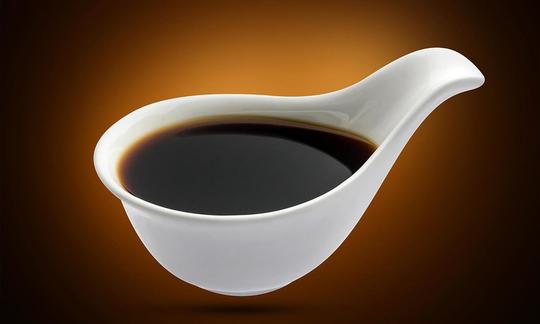

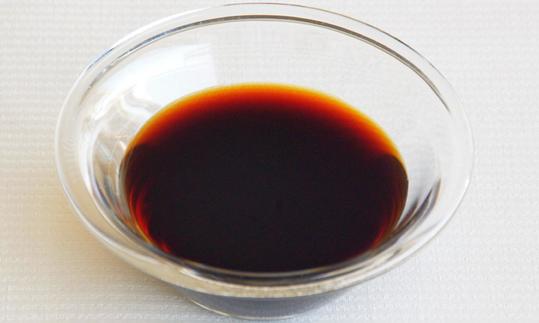

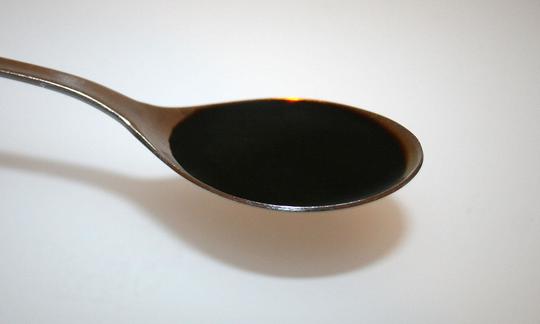


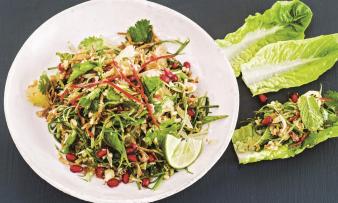



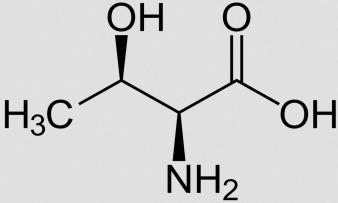


Comments